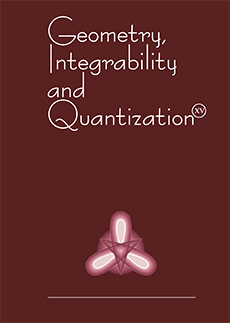Abstract
We introduce orbital functionals $\int \beta$ simultaneously for each commensurability class of orbital surfaces. They are realized on infinitely dimensional orbital divisor spaces spanned by (arithmetic-geodesic real 2-dimensional) orbital curves on any orbital surface. We discover infinitely many of them on each commensurability class of orbital Picard surfaces, which are real 4-spaces with cusps and negative constant Kähler–Einstein metric degenerated along an orbital cycle. For a suitable (Heegner) sequence $\int \mathbf{h}_N, N \in \mathbb{N}$, of them we investigate the corresponding formal orbital $q$-series $\sum_{N=0}^{\infty} (\int \mathbf{h}_N)q^N$. We show that after substitution $q = {\rm e}^{2 \pi \mathbf{i} \tau}$ and application to arithmetic orbital curves Ĉ on a fixed Picard surface class, the series $\sum_{N=0}^{\infty}(\int_{Ĉ} {\mathbb{h}_N})e^{2 \pi \mathbf{i} \tau}$ define modular forms of well-determined fixed weight, level and Nebentypus. The proof needs a new orbital understanding of orbital heights introduced in [12] and Mumford–Fulton’s rational intersection theory on singular surfaces in Riemann–Roch–Hirzebruch style. It has to be connected with Zeta and Theta functions of hermitian lines, indefinite quaternionic fields and of a matrix algebra along a research marathon over 75 years represented by Cogdell, Kudla, Hirzebruch, Zagier, Shimura, Schoeneberg and Hecke. Our aim is to open a door to an effective enumerative geometry for complex geodesics on orbital varieties with nice metrics.
Information
Digital Object Identifier: 10.7546/giq-4-2003-42-87


